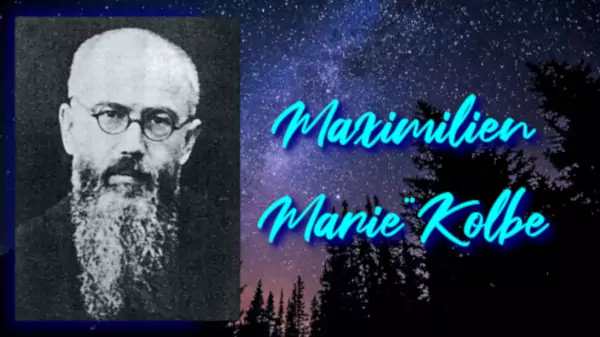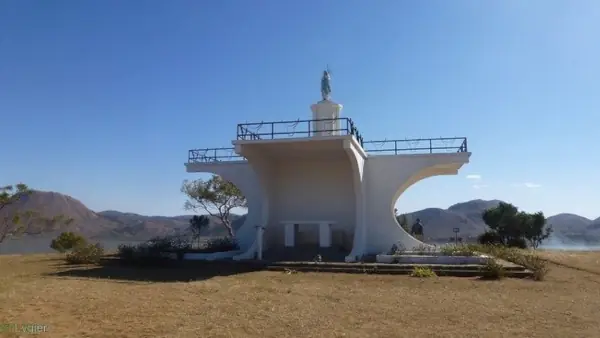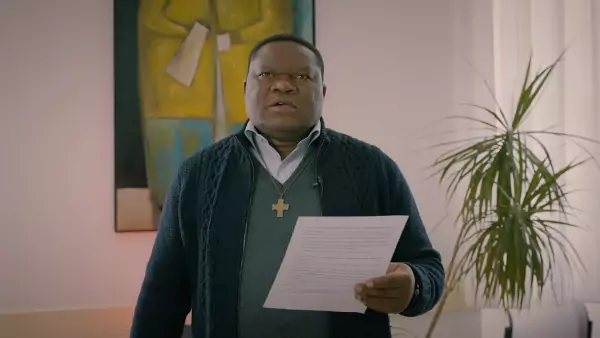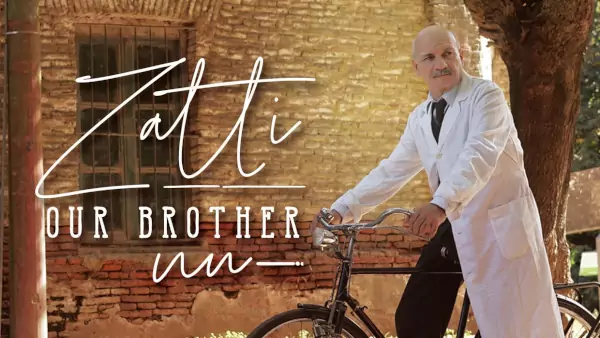14 August - Maximilien Kolbe, Rajmund Kolbe at the registry office, is born on 8 January 1894 at Zduńska Wola, Poland. His parents, Julius Kolbe and Maria Dąbrowska are both Franciscan weavers and tertiaries. The father took part in the Polish legion of the independentist Józef Piłsudski in 1914.
Annoyed by the turbulent character of her second son, his mother would have asked him one day what he would become later. Deeply concerned by this question, Maximilian would then have addressed himself directly to the Virgin Mary. It was then that he would have had a vision of the Virgin from Częstochowa who, as an answer, proposed two crowns to him: a white one for purity and a red one for martyrdom. She asked him to choose and he accepted both and committed himself to become better every day.
As a student, he asked himself the question of the priesthood and he saw Franciscans passing through his city. He followed them and became a conventual Franciscan priest. He entered the Franciscan Conventual Novitiate in 1907, took his first vows and then his final vows on All Saints' Day 1914. A brilliant student of philosophy and theology, he was then sent to Rome for preparatory studies for the priesthood, which he did at the Pontifical Gregorian University. Ordained a priest on April 28, 19182, he also obtained a doctorate in theology in 1919.
In 1917, in Rome, he founded the Mission of the Immaculate (M.I.): a spirituality based on the total gift to the Immaculate Conception to become an instrument in her hands. The Latin name is Militia Immaculatae, meaning Army of the Immaculate. In January 1922, he created the newspaper, Le Chevalier de l'Immaculée. In August 1927, he founded Niepokalanow, "the city of the Immaculate", about 40 kilometers from Warsaw, which will count nearly 800 religious. There he set up a publishing house and a radio station, he himself was a radio amateur under the code SP3RN, both of which were intended to promote the veneration of the Virgin Mary, especially in the mystery of the Immaculate Conception.
In 1930, he lived the same apostolate in Japan with four brothers, where, in 1931, despite illness, he founded another City of Mary near Nagasaki. The convent was built on a hill with its back to the city. To everyone's astonishment, it is the only building left standing when the atomic bomb exploded in 1945, protected by the mountain. Two years later, he left for British India with the same mission, on the Malabar coast (Kerala or Karnataka), in 1932, with less success. He returned to Poland in 1935 or 1936, where he founded and printed in Niepokalanów a Catholic daily newspaper Mały Dziennik (The Little Diary), which, during the Second World War, would enter into resistance alongside the National-Radical Camp whose leader, Jan Mosdorf, was deported to Auschwitz-Birkenau, where he was killed in 1943 for aiding Jews.
In 1939, his brotherhood provided shelter for Polish, Catholic and Jewish refugees. Along with 36 other Polish clergymen, Father Maximilian Kolbe is first arrested and beaten, before being released on December 8, the day of the Immaculate Conception. On February 17, 1941, he was arrested by the Gestapo and violently beaten. On May 28th, he was transferred to the Auschwitz camp under the number 16670. With only one lung out of two and 1/4 of the remaining lung remaining, he works without complaint and never loses an opportunity to help the inmates of his group. In July 1941, a prisoner from block 14, where Father Kolbe is, manages to escape. The SS Hauptsturmführer Karl Fritzsch, orders in reprisal, that ten of the 599 prisoners of the block be sentenced to die of hunger and thirst in block 117. To discourage escapes, the camp regulations required that 10 prisoners be executed in the event of a man's escape. The Nazis thus selected ten men from block 14, including Franciszek Gajowniczek, a father.
Maximilien Kolbe hears Gajowniczek shouting "My poor wife! My poor children! What will become of them?" The cleric then offers to die in his place. The Nazis agree to the substitution. The ten prisoners are locked in an underground bunker in the camp, barely lit by narrow openings, the "hunger bunker". Although hunger and thirst usually drove the condemned to madness, screaming and killing each other, the guard of the bunker testifies that in a very short time, the priest Maximilian succeeded in bringing calm and piety among his companions in this tragedy, by means of prayers and orations for Christians and Jews alike.
After three weeks without food and water, Father Kolbe remains alive after seeing all his companions die. When he ran out of room, he was executed on August 14, 1941 with a lethal dose of phenol in the arm by the kapo Hans Bock, a recidivist criminal, who was in charge of the execution and was unable to fix the saint's gaze. His body was burned in a crematory oven the next day, August 15, Assumption Day.
Maximilian Kolbe was beatified as confessor in 1971. On October 10, 1982, he was canonized as a martyr by Pope John Paul II. He is the only one to have been honoured first as a confessor and then as a martyr.








